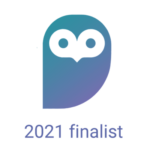Toys play an important role in the development of kids, but their lifespans are short and recycling them is difficult.
MiYo is an online platform that enables children and their caregivers to act together towards a sustainable and extended lifecycle for toys by creating a local network of exchanges.
It helps users understand the value of used toys through a new perspective while including children in the decision-making process.

Our process
Intending to decrease the impact of toy wastes on the environment gave us the chance to uncover the potential values of used toys that could lead society to save by sharing rather than only using for a few months and discarding. Passing through all the research milestones, we realized that we could save many toys from going directly to the trash by making children understand the value of used toys.
PROJECT
Student Service Design Challenge Initiated and powered by Philips Experience Design and co-organized with Service Design College, and in collaboration with IBM and the Ellen MacArthur Foundation.
PRIZE
BRONZE WINNER
AUTHORS
team Hula Hoops: Emma Teli, Julia Rangel, Mehrdad Atariani, Nardin Adel Shafik and Zhengang Lou
DATE
2021


Stakeholders
Toys life cycle centre aroud parents and kids
90% of toys are currently made from plastic and their average lifespan is only around eight months. A significant percentage of parents and caregivers prefer to buy new toys for their kids looking to inspire and stimulate them. Social media also plays an important role in the market, defining trends and ‘must-haves’ toys.
Children are overwhelmed with the amount of toys they have and the frequency they receive them. Although they build strong emotional ties with some of them, most of the toys are quickly forgotten or abandoned in their homes in favor of new ones.


Ecosystem
All stakeholders must play a role to promote a sustainable shift in the industry. Children need to be educated on the importance of caring for their toys and recognising their value. They need to understand the impact generated by disposing of them prematurely and the effects on the planet.
Parents, on the other hand, need to take responsibility for their influence on their kid’s behaviors. They need to make more conscious choices at the beginning of the usage journey, when purchasing toys, as well as at the end.
In the toy industry, many stakeholders are involved, such as toy stores, manufacturers, donation centers and recycling services. However, we identified children (users) and parents (customers) as the principal stakeholders because they are the most intensively involved in a toy’s lifecycle.

Toto’s experience journey map
Based on the desk and field research, we made a lifecycle map from the point of view of a regular toy, which we named Toto. It identifies all the different stakeholders interacting with Toto’s lifecycle, from production, use, donation and abandonment. This map helped us uncover the potential values of used toys that would efficiently reduce the burden of toy waste on the environment. A sharing model, rather than a use-and-discard one, could lead society to mitigate the effects of the toy industry’s ecological impact.


Concept
MiYo is an online platform enabling children – with the support of their caregivers – to act together towards a sustainable and extended lifecycle for toys by creating a local network of exchange with the use of storytelling. It helps children understand the value of used toys by generating new perspectives and behaviors while including them as key players in the decision-making process.
The service encourages children to gain a new appreciation for their used toys by highlighting their unique traits and stories. Recovering a toy’s value extends the time a kid will play with it. Kids share their toy’s personality, life and experiences they had together, looking at them through a new perspective that inspires creativity and sparks interest from a new child.
Sharing their personal narratives, they effectively extend the lifespan of their toys.
The service aims to transform children into change enablers, amplifying their voices and paving the way for new usage behavior towards toys. The platform engages children and their caregivers, making toys come to life and easy to swap, and offering practical delivery methods, recycling and donation options.
Offering map






